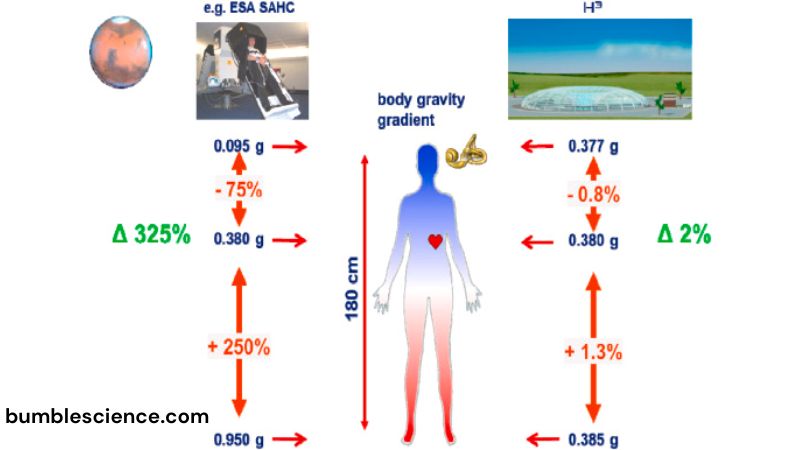In the vast expanse of space, where the boundaries of human exploration continue to expand, the challenges posed by the extraterrestrial environment are immense. As astronauts venture farther into the cosmos, NASA biomedical engineering stands at the forefront, addressing the intricate balance between human physiology and the rigors of space travel. From understanding the effects of microgravity on the human body to developing life-sustaining technologies, NASA biomedical engineering plays a pivotal role in ensuring the health and safety of astronauts embarking on missions beyond Earth’s orbit. Lets discover with Bumblescience right now.
NASA Biomedical Engineering: Pioneering Health Solutions for Space Exploration
NASA Biomedical Engineering emerges as a pioneering force in the domain of space medicine, driven by an unwavering dedication to unraveling the intricacies of human physiology in microgravity environments. Positioned at the forefront of scientific inquiry, its mission encompasses the exploration of innovative strategies to mitigate the deleterious effects of space travel. Through a concerted effort of rigorous research and technological innovation, NASA Engineering endeavors to furnish astronauts with the requisite resources to flourish amid the rigors of space exploration, ensuring their well-being and enabling the advancement of human presence beyond Earth’s bounds.
Understanding the Effects of Microgravity: A Focus on Human Physiology
One of the fundamental pillars of NASA Biomedical Engineering is the study of how the human body responds to the microgravity environment of space. Microgravity poses unique challenges to the human physiology, leading to issues such as muscle atrophy, bone density loss, and cardiovascular deconditioning. By delving into the intricacies of these physiological changes, NASA Biomedical Engineering seeks to develop targeted interventions that can preserve astronaut health during extended missions.
Life Support Systems: Sustaining Life in the Harsh Environment of Space
In the vast expanse of space, where the harsh realities of survival loom large, life support systems emerge as the indispensable lifeline for astronauts. Within NASA Biomedical Engineering, engineers are entrusted with the formidable challenge of conceptualizing and implementing resilient systems that guarantee the provision of vital resources essential for sustaining life. From ensuring a steady supply of clean air, water, and food to effectively managing waste, these innovative life support technologies play a pivotal role in safeguarding the health and well-being of astronauts as they navigate the complexities of space exploration.
Enhancing Extravehicular Activities: The Evolution of Space Suit Design
Space suits stand as essential components for astronaut mobility and safety during extravehicular activities (EVAs) in the unforgiving realm of space. Within NASA Biomedical Engineering, engineers undertake a critical role in the continual evolution of space suit design. This involves the fusion of biomechanical principles with cutting-edge materials and technologies to enhance functionality and performance. Through these advancements, engineers aim to furnish astronauts with unparalleled protection, mobility, and comfort, ensuring their ability to navigate and operate effectively in the challenging and hostile environment of space.
Monitoring Astronaut Health: Biomedical Sensors and Advanced Monitoring Technologies
Continuous monitoring of astronaut health is essential for detecting and addressing medical issues in the microgravity environment of space. NASA Biomedical Engineering spearheads the development of biomedical sensors and advanced monitoring technologies that enable real-time assessment of vital signs and physiological parameters. These innovative devices serve as invaluable tools for safeguarding the health and well-being of astronauts throughout their mission duration.
Telemedicine: Bridging the Gap Between Space and Earth
In the expansive reaches of space, ensuring access to medical expertise stands as a paramount concern for addressing the diverse health needs of astronauts. Spearheading this endeavor, NASA Biomedical Engineering pioneers the development of telemedicine technologies tailored for use in the extraterrestrial environment. These innovative systems facilitate remote medical consultations and diagnostics for astronauts stationed aboard spacecraft, enabling seamless communication and data transmission between medical professionals on Earth and crew members in space. By facilitating timely guidance and support, these telemedicine solutions enhance the capacity to address medical challenges effectively, bolstering the health and well-being of astronauts as they navigate the isolation and rigors of space exploration.
Artificial Gravity: Simulating Earth-like Conditions in Space
With humanity aiming for prolonged missions to remote locales, the necessity for artificial gravity becomes more pronounced. NASA Biomedical Engineering delves into centrifuge-based systems to emulate Earth-like gravity in space. By exposing astronauts to simulated gravity, researchers seek to counteract the negative impacts of prolonged weightlessness on the human body. This initiative aims to safeguard the health and welfare of crew members during extensive missions, enhancing the feasibility and sustainability of future endeavors into the cosmos.
Conclusion: Shaping the Future of Human Spaceflight through Biomedical Engineering
In conclusion, NASA biomedical engineering represents a cornerstone of space exploration, addressing the intricate interplay between human physiology and the challenges of space travel. Through a multifaceted approach encompassing space medicine, life support systems, space suit design, biomedical monitoring, telemedicine, and artificial gravity research, NASA biomedical engineering endeavors to ensure the health, safety, and well-being of astronauts venturing into the cosmos. As humanity embarks on bold new missions to explore the far reaches of the universe, the pioneering efforts of NASA biomedical engineering will continue to shape the future of human spaceflight.


